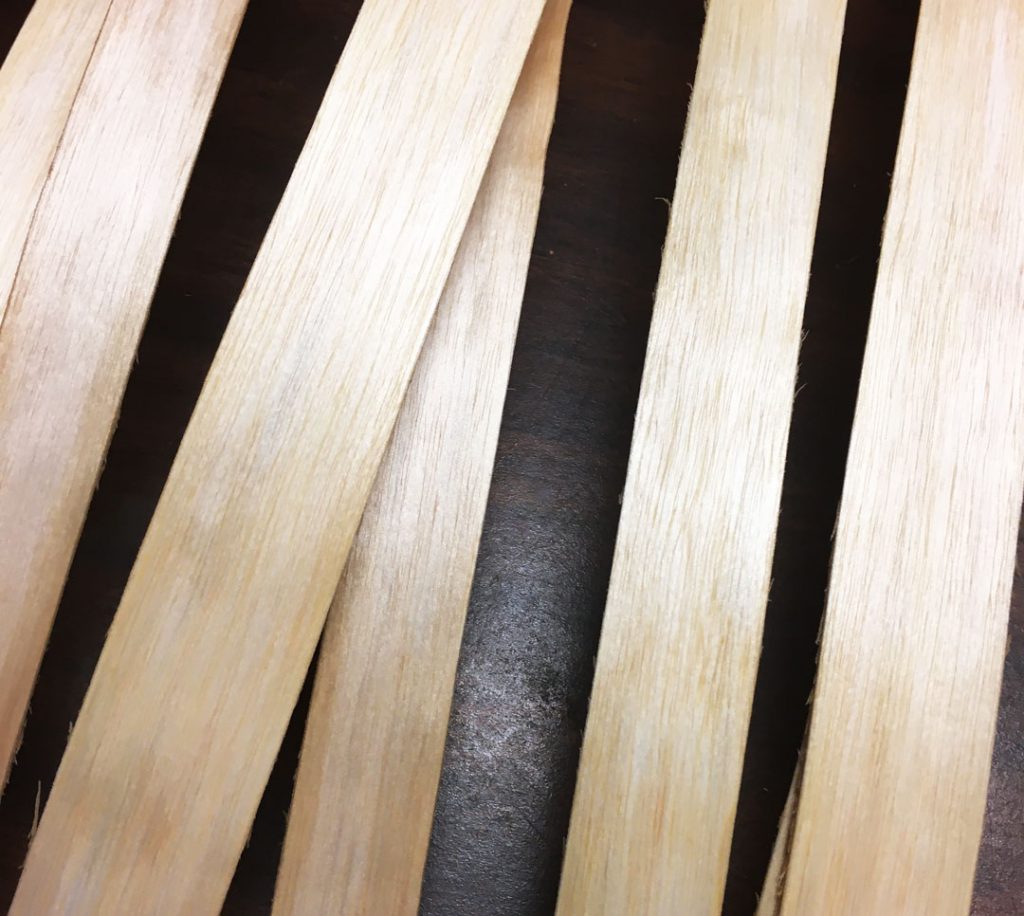Last week I posted the black ash soaking in a ‘wood vat’ that Eric built. Now it’s the next process, splitting to satin…
Grabbing the splint from the vat after it soaked from the day before…
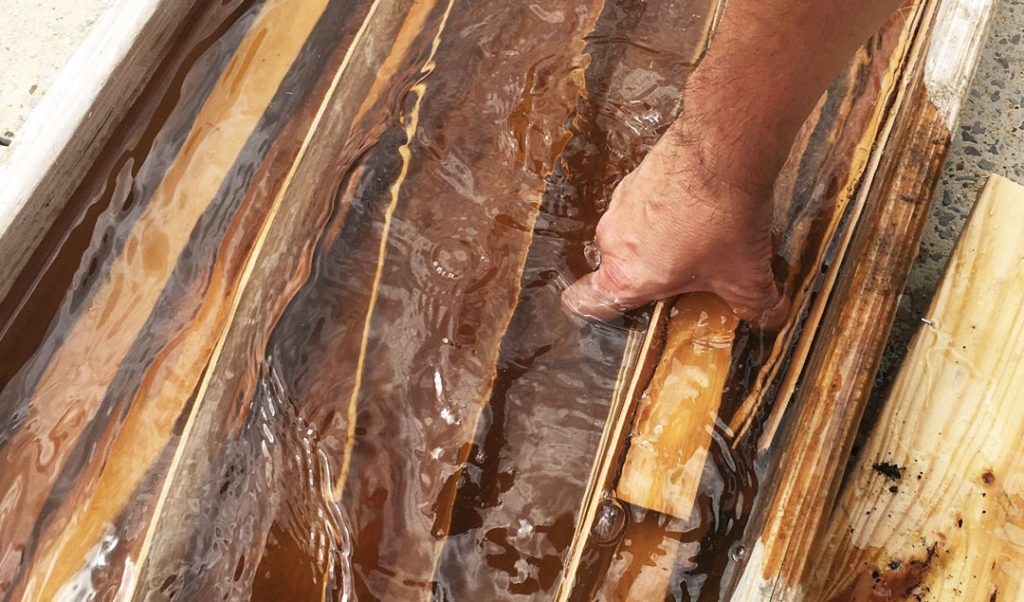
Eric Scores the end across the width with a utility knife, making sure not to cut too deep—Approximately half the thickness…
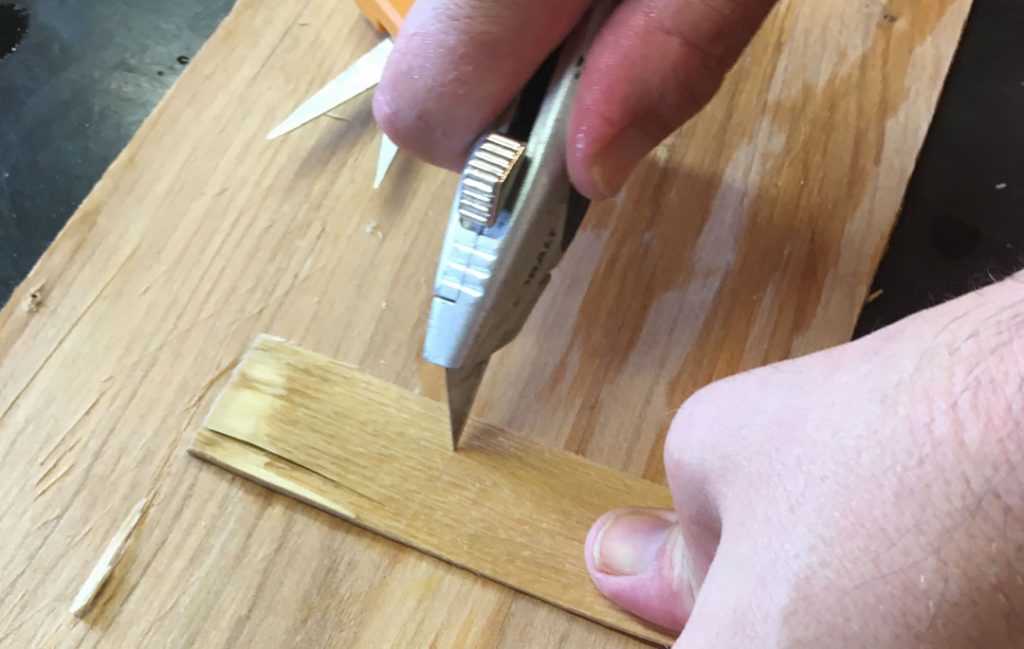
Pull off the first “tab” to get the “splitting” going…
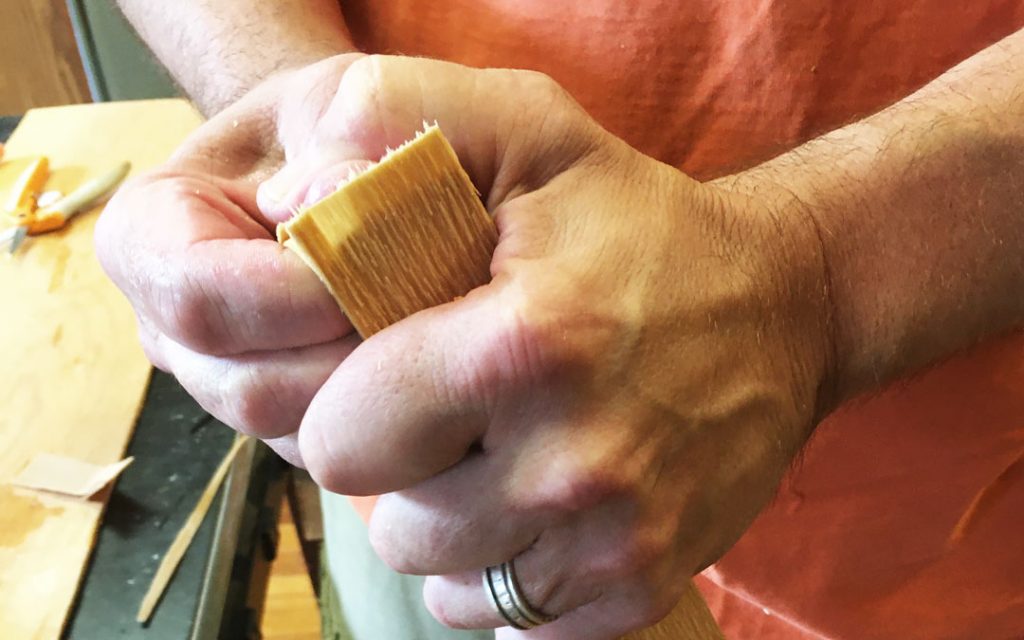
Now separate to get it started…
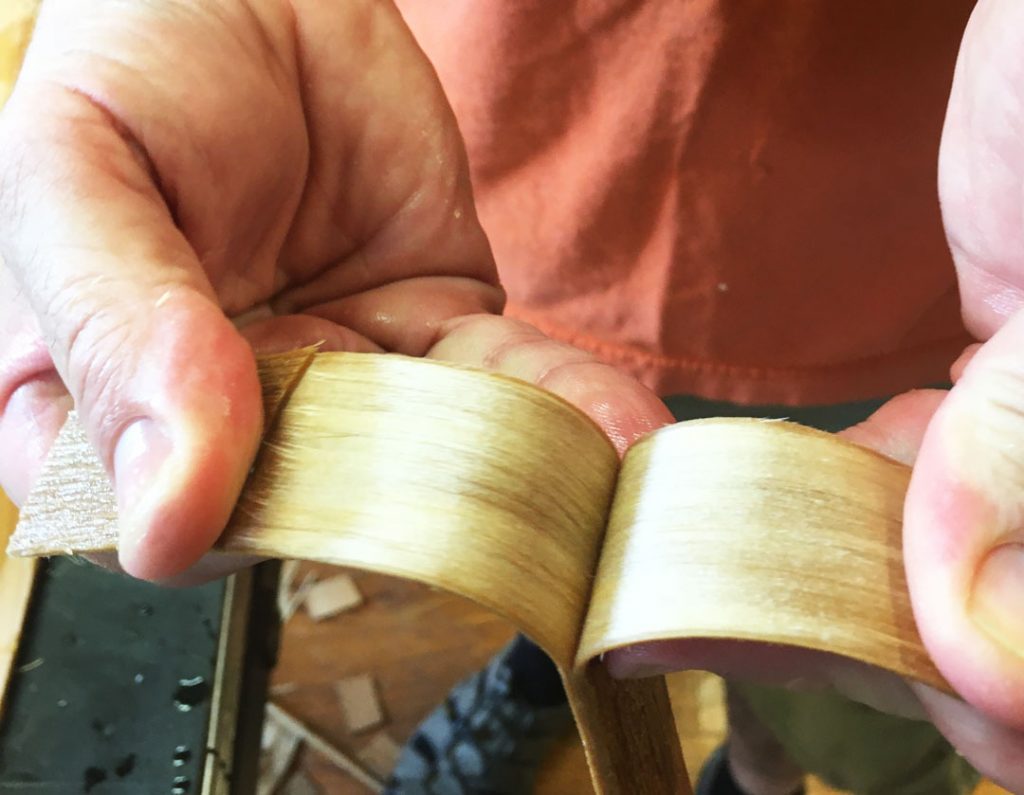
Next, is inserting this splint into a custom “split-to-satin” contraption that native Americans called a Splint Shute, and Eric built the same kind of version. Splitting to satin is a process that takes one annual growth ring and splits it into two pieces. The inner two pieces now are called the satin—they have a shiny look and this side becomes the outside, or the finish side of the Black Ash basket.
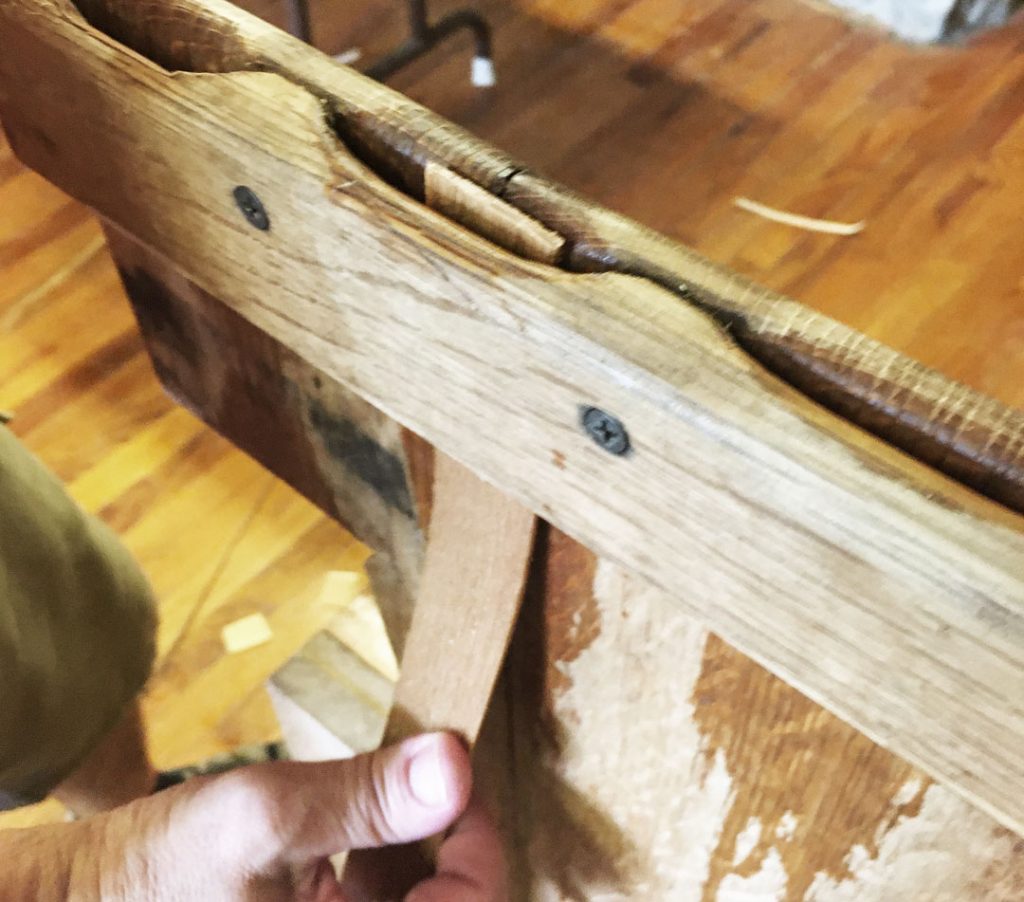
A Splint Shute needs to have multiple slots to accommodate different width of Black Ash strips, as seen in above image. It is important to have the slot in the Splint Shute close to the thickness of the strips of Ash that you are spitting to satin.
I will add here that some images are blurry because Eric doesn’t stop…even when he tells me to take a photo, he just keeps moving real fast…
Start pulling apart…
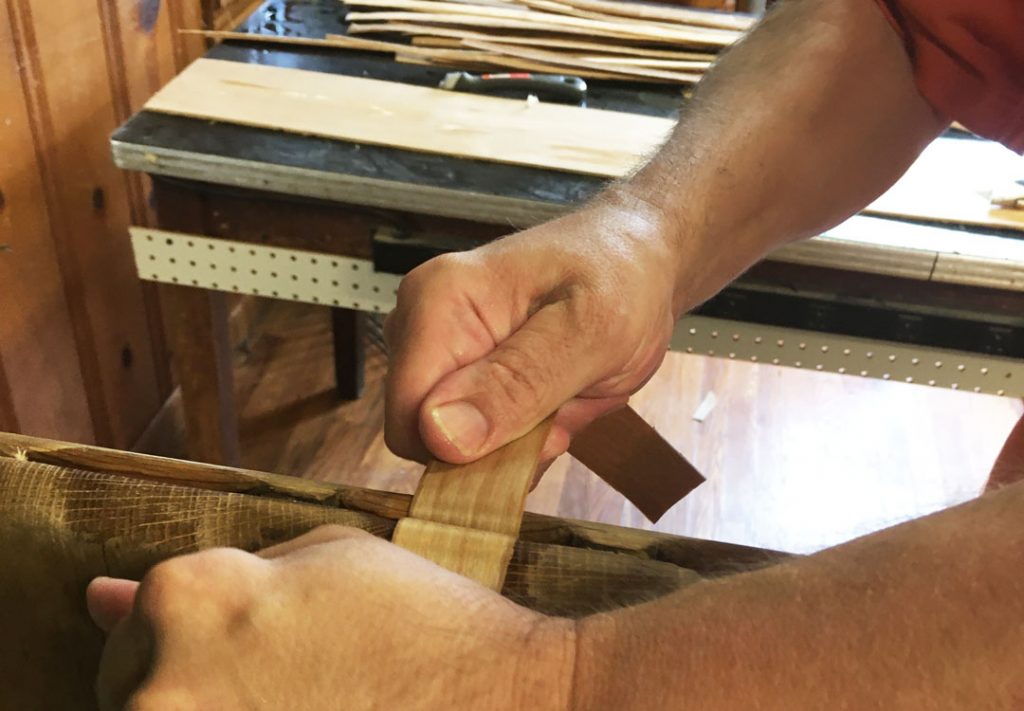
Once started, equal pressure is needed to successfully divide the Ash strip into two pieces, at a consistent fast pace…
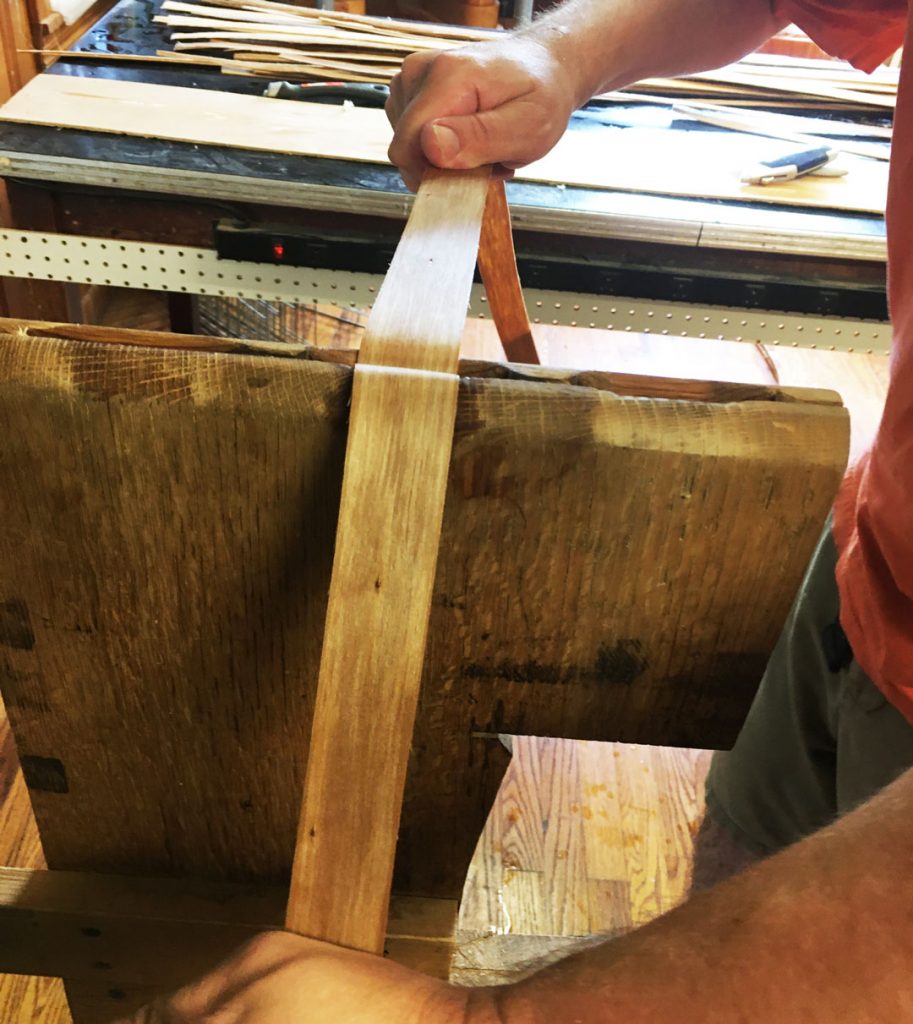
Now it’s “split to satin”…
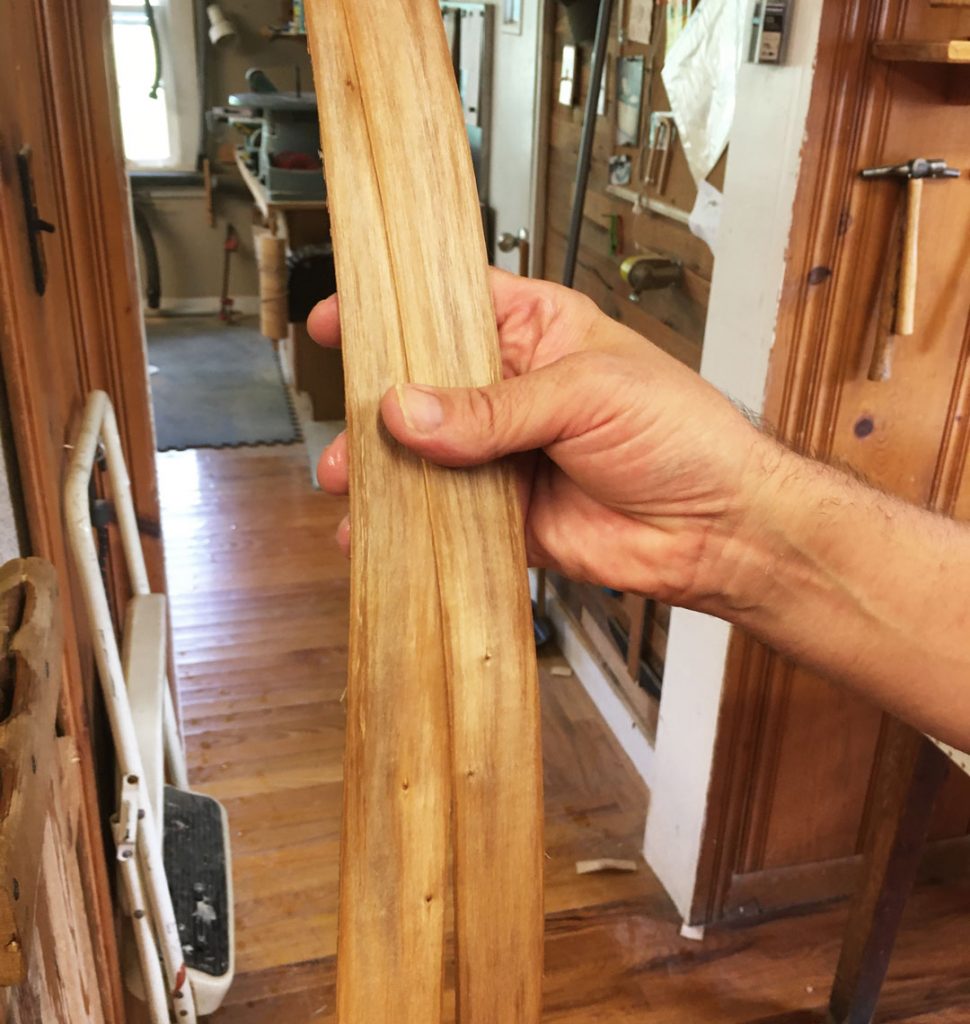
I will add here that Eric was a little frustrated this day because… do you see all the knots? Eric always tells me and his students that he loves natural knots in his baskets since it adds character. However, these “knots” cause havoc during “splitting” becauseif they are too big, then it just shreds into useless shorts. So “knots” are not good when “splitting to satin.”
Eric does say that he loves the process of splitting to satin. Sometimes he strike out, sometimes he hits a single or a double and sometimes he hits a home run! Those are the one drying in front of a fan below…
